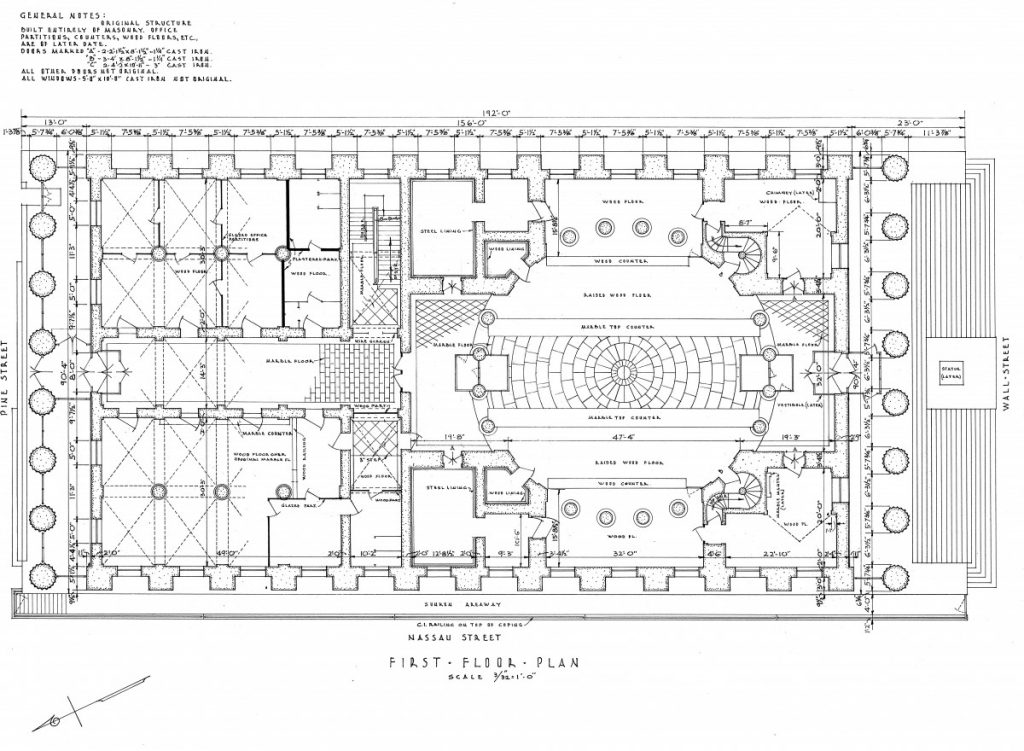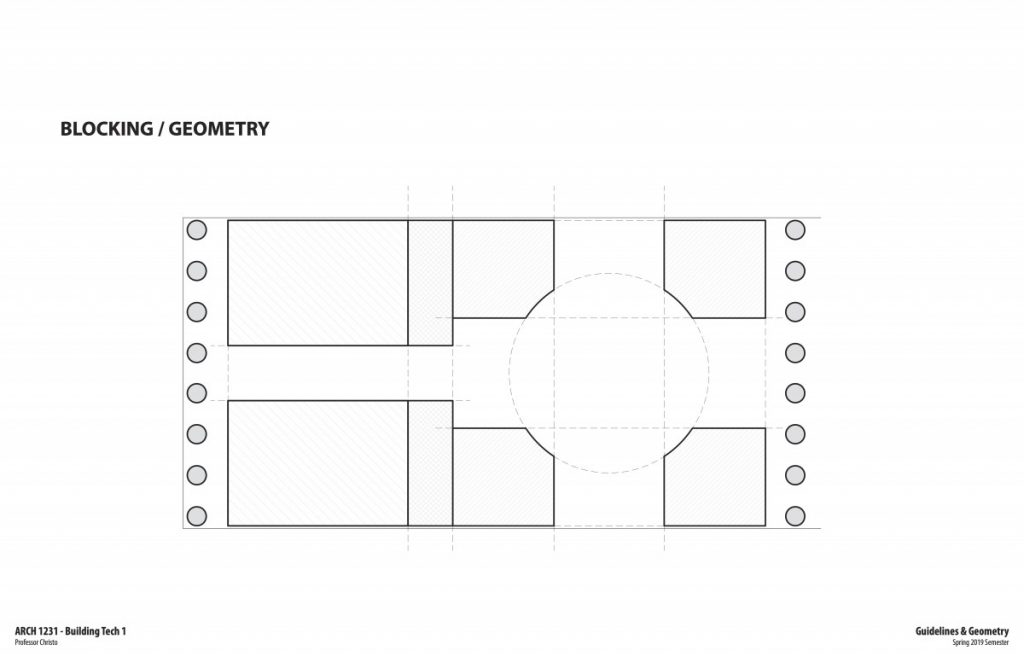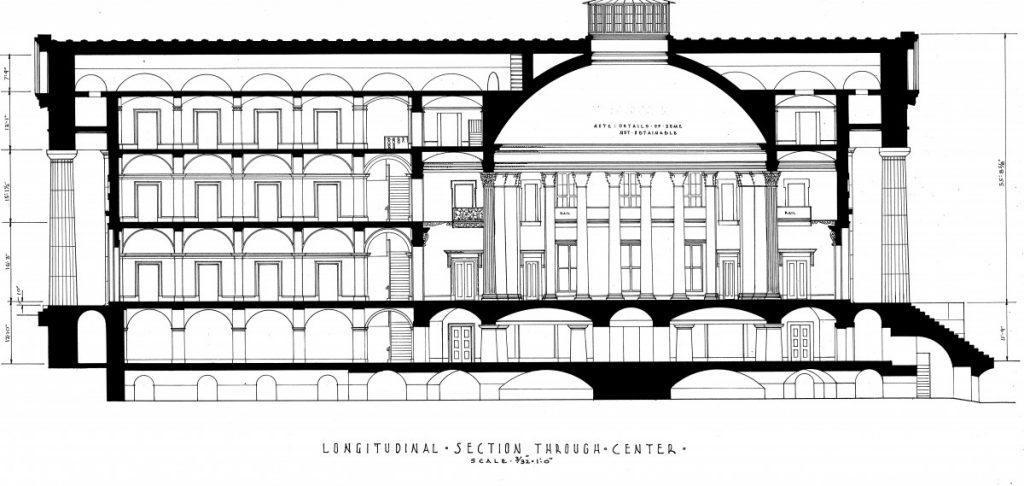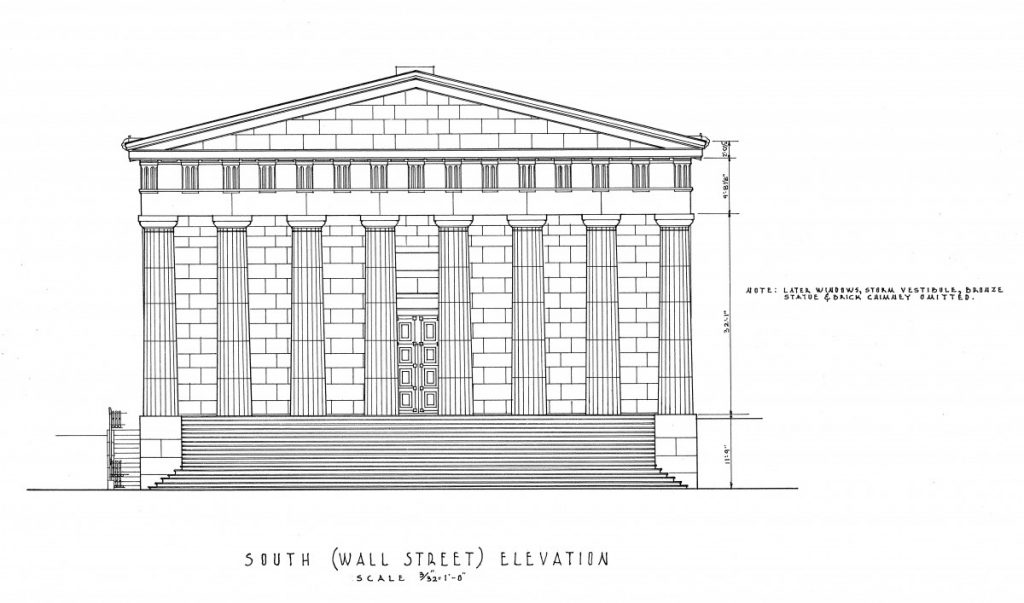Overview
Plans, Sections, and Elevations are the most basic drawings for studying buildings, giving clear primary information about the nature of the building.
Plans indicate the layout and flow of space at a particular level of the building.

Plan views are also useful for diagramming the overall ordering system of a building.


Building sections are critical drawings for understanding the relationship between space, structure, and building form. Structural configuration and thickness at exterior walls, floors, and roofs is a critical aspect of the information these drawings provide.

Elevations are constructed using sections as guides and sources of projection of critical elements in the correct position.

These drawings must be coordinated carefully with each other, and developed with clear reference lines (structural grid lines and key elevation/level lines).
Assignment Context:
This assignment builds on the knowledge and experience of careful documentation and coordinated drawing development from ARCH 1101. This assignment also offers documentation of masonry architectural elements.
Prerequisites:
Understanding of orthographic projection and detailed observation of case study details.
Recommended Text:
Ching, Francis. Architecture Graphics. John Wiley and Sons, 2009.
Plagiarism:
Student work submitted must be original and developed individually. Tracing is not acceptable. All construction lines and notations during drawing construction are to remain visible at final submission. Drawings without construction lines (guidelines) will be downgrading significantly.
Learning Outcomes
| Learning Outcomes | Assessment Methods |
| Upon successful completion of this assignment the student shall be able to: | To evaluate the students’ achievement of the learning objectives, the professor will do the following: |
| Develop coordinated, accurate, and consistent set of two -dimensional drawings documenting the building section and elevation | Review student drawing set for consistency, orthographic projection and coordination between drawings, and dimensional accuracy. |
| Understand the construction of building sections and elevations following drawing conventions and the critical application of reference lines | Review student drawing set submission for careful documentation and application of structural grid and elevation lines as well as line weights. |
Due Date(s)
6pm day before Class #6 (see Schedule)
Instructions
NOTE: All drawings to be 1/16″=1′-0″ or larger on 12″x 18″ sheets unless otherwise agreed with Professor Montgomery
Final Deliverables:
- Federal Hall First Floor Ordering Diagram
- Federal Hall First Floor Plan
- Federal Hall Longitudinal Section
- Federal Hall South Elevation
Follow these steps:
- Develop Ordering Diagram of Building Geometry, Grid, Symmetry, and Spatial Zoning
- Using Trace Paper Overlay technique, Layout Out First Floor Plan of Federal Hall
- Using Trace Paper Overlay technique, Develop Longitudinal Building Section
- Using Trace Paper Overlay technique, Develop South Elevation
- Complete each of these drawings. Scan on flatbed scanner and format per the course formatting guidelines (found here)
- Submit all formatted files to the dropbox folder found here.
Grading Rubric
| Approaching Benchmark | Benchmark | Approaching Capstone | Capstone | |
| Lineweight Distinguishing elements especially cut lines (poche), grid lines, transparent elements, finishes | Lines are consistent thickness and quality, in the correct alignment | In addition, two line weights are distinguishable, including cut line | In addition, three or more line weights are distinguishable, including some finish textures | In addition, transparency is clear, centerlines, grid lines, dimension lines are shown w/ correct line type and line weight. |
| Drawing Organization and Accuracy Setting out of grid and the relationship of elements to the grid is accurate | Structural Grid is established | In addition, structural grid is dimensioned accurately and labeled correctly | In addition, major elements (walls, columns) are accurately placed in relation to the structural grid | In addition, all drawing elements are carefully located in relationship to centerlines and the structural grid |
| Construction / Guidelines Guidelines and constructions were utilized in the careful construction of each drawing | Guidelines are used for overall geometry of drawings | In addition, guidelines indicate orthographic projection for 3-d vignette construction. | In addition, guidelines indicate geometric center of spaces, perimeters of spaces, and grid locations of key elements | In addition, guidelines are accurate, working off of grid lines and centerlines to each major element and guiding alignments. |
| Drawing Conventions + Coordination Standard methods of drawing and documentation of key data and elements are utilized and coordinated | Drawings are properly scaled and provided with a title including course #, student name, professor name, semester + year | In addition, detail drawings are referenced to each other using cut lines and tags | In addition, drawings are organized on sheet to ensure proper projection from plan to elevation to section detail | In addition, drawings are consistent and coordinated and indicate clear understanding of drawing types and layers of information |
Resources
- For some refresher resources on drawing plans, sections, and elevations, see this link: https://openlab.citytech.cuny.edu/arch1231/drafting-support-resources/




Leave a Reply